ВУЗ: Казахская Национальная Академия Искусств им. Т. Жургенова
Категория: Книга
Дисциплина: Не указана
Добавлен: 03.02.2019
Просмотров: 17294
Скачиваний: 51
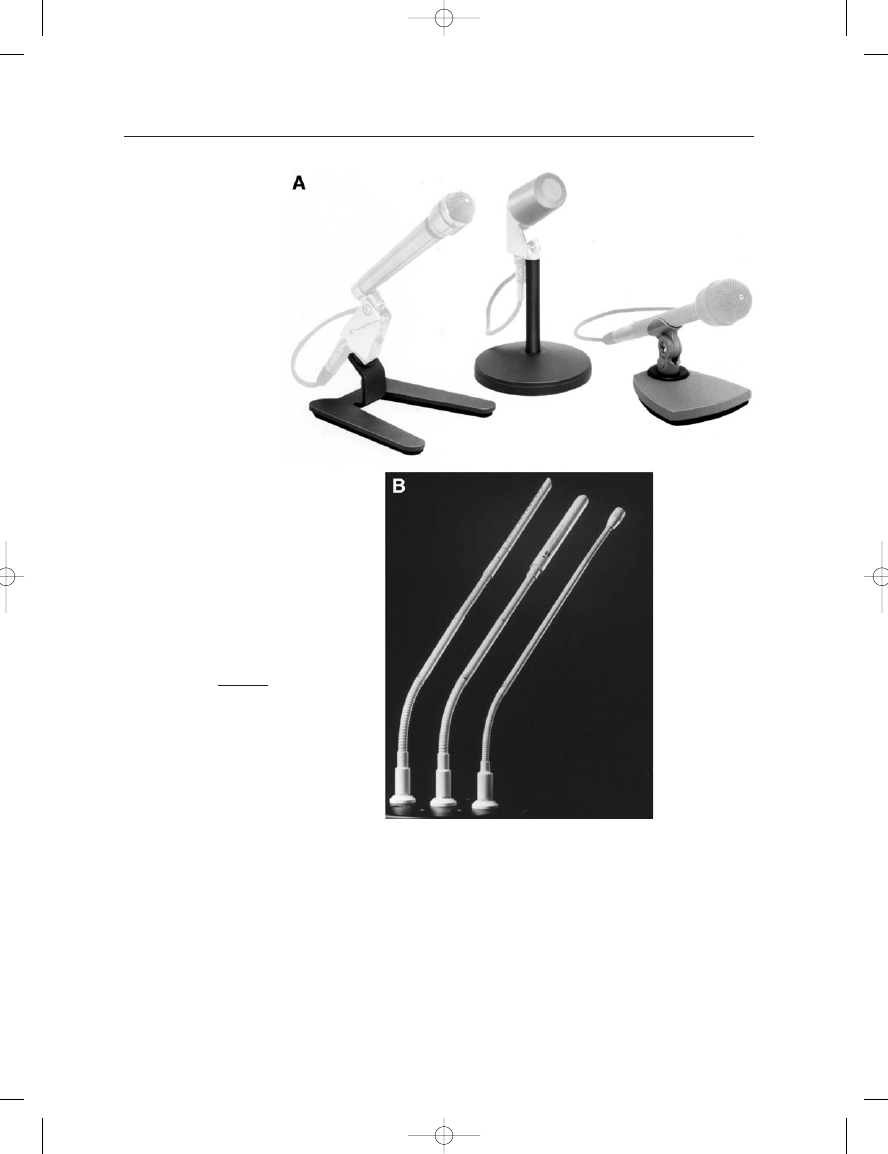
10: Microphone Accessories
153
a surface in a stable position. These used to be familiar items in board
rooms and on the stage floor in performance venues. The microphone’s
position at a relatively large boundary results in minimal reinforcements
and cancellations due to reflections from the floor surface to the micro-
phone. Today, we are more likely to see a very low profile boundary layer
(BL) microphone for such applications as these.
FIGURE 10–1
Microphone desk mounts:
standard models (A);
dedicated models with
slender gooseneck and
microphone sections (B).
(Photo A courtesy of
Electro-Voice; Photo B
courtesy of AKG Acoustics.)
Earg_10.qxd 14/9/04 2:47 PM Page 153
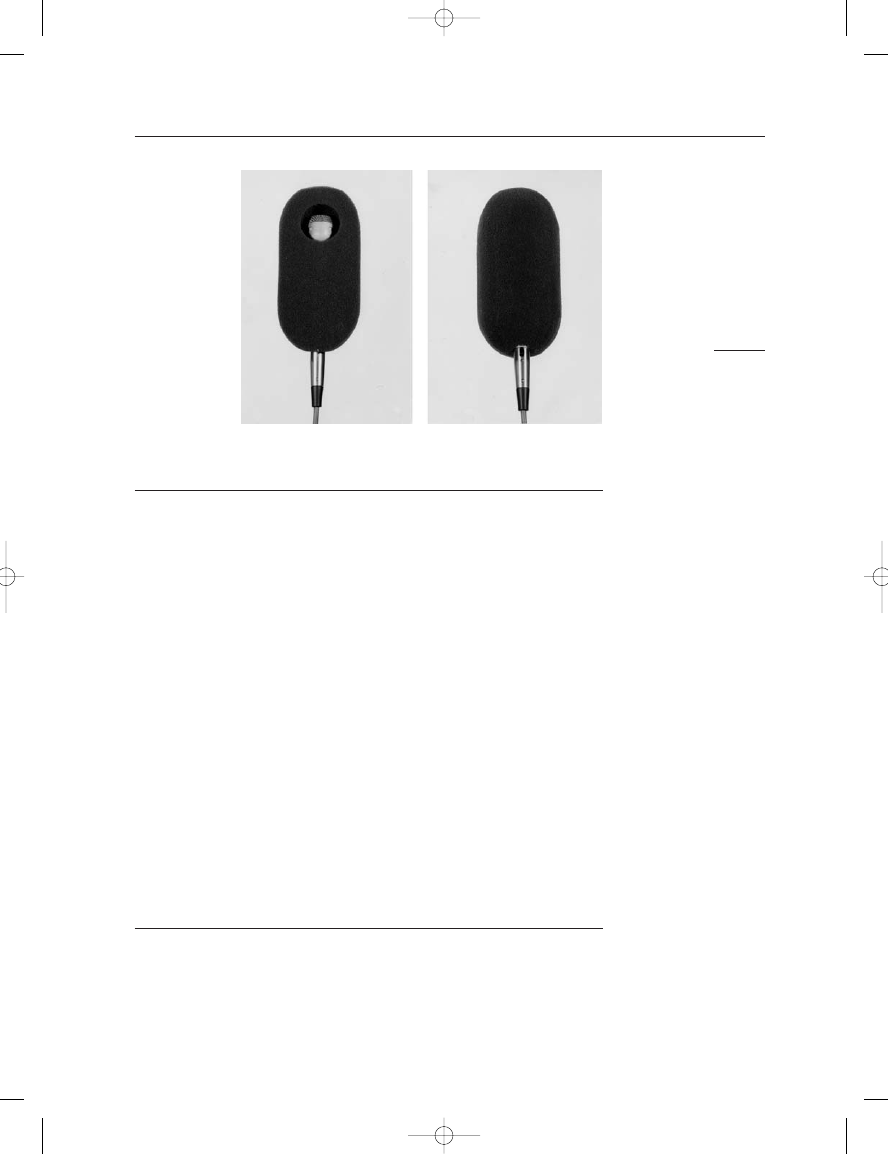
MICROPHONE STANDS AND BOOMS
Microphone stands come in all sizes and configurations and can span
adjustable heights from about 0.5 meter to 5 meters (1.5 ft to 15 ft), as
shown in Figure 10–3A. The high stands require a large footprint for
safety, and take great care when using them with large format microphone
models. These stands are useful where sound pickup in front of and above
an ensemble is sufficient. Where there is a need to position the microphone
within an ensemble, then a horizontal boom assembly attached to the
stand will allow positioning the microphone over the players. A comfort-
ably large footprint is necessary, as is an appropriate counterweight to bal-
ance the microphone. Such booms are a mainstay in the popular studio.
Do not stint on quality. Good stands and booms are not cheap, and
well-made models will last indefinitely. A number of recording engineers
who are in the remote recording business have taken a page from those in
the motion picture trades. They have gone to grip manufacturers (suppliers
to the motion picture trade for stands, props, reflectors, scrims, and the like)
for purpose-built microphone stands at relatively reasonable prices.
For motion picture and video field sound pickup, telescoping hand-
held booms, as shown at B, are typical. Typical usage of a boom is shown
in Figure 10–3C. A good operator skillfully keeps the boom-microphone
assembly out of the picture, closely following the talkers and keeping the
microphone pointed at them.
STEREO MOUNTS
A stereo mount is a piece of hardware that will accommodate two
microphones on a single stand, positioning them securely for stereo
pickup. The model shown in Figure 10–4A is articulated so that both
microphone angle and spacing can be adjusted. The assembly shown at
THE MICROPHONE BOOK
154
FIGURE 10–2
Foam floor-mount adapter,
top and bottom views.
(Photo courtesy of
Electro-Voice.)
Earg_10.qxd 14/9/04 2:47 PM Page 154
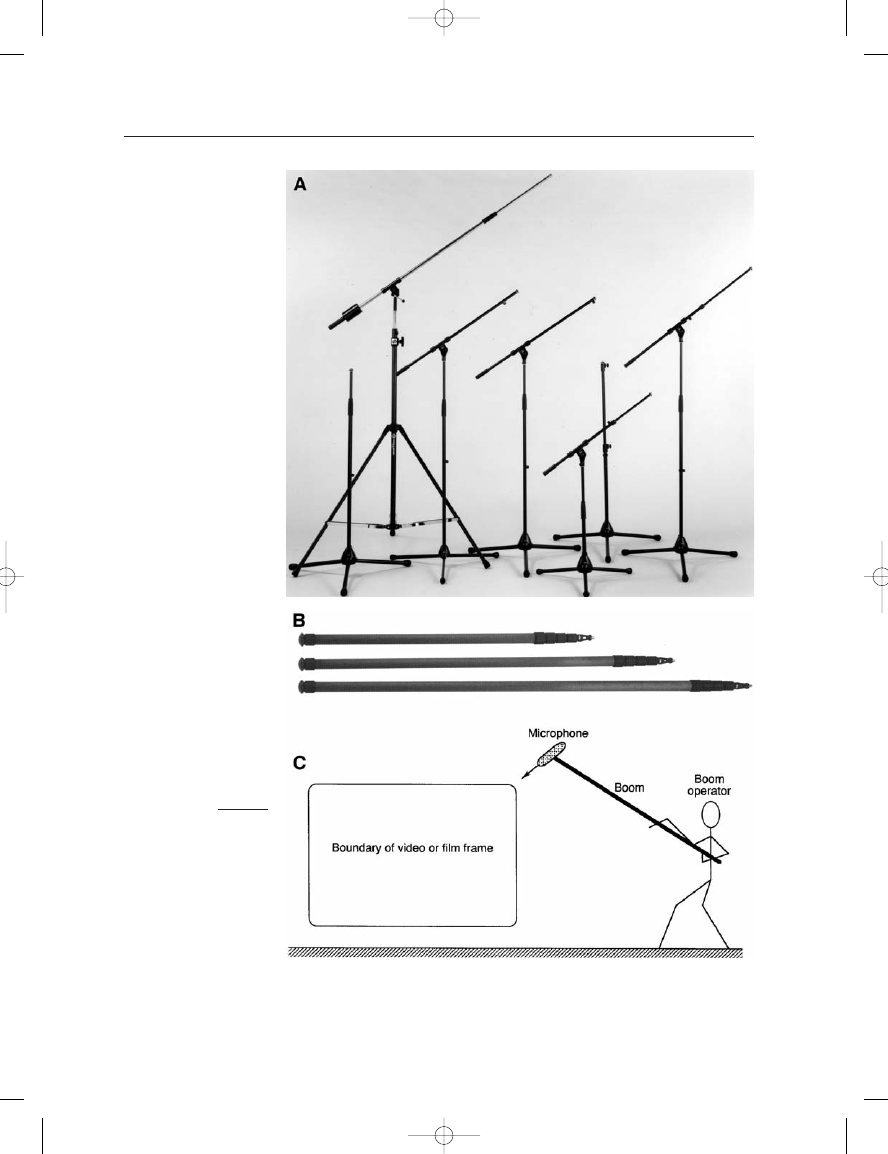
10: Microphone Accessories
155
FIGURE 10–3
Typical microphone stands
and boom assemblies (A);
telescoping handheld booms
as used in film and video
work (B); boom in
operation (C). (Photo A
courtesy of AKG Acoustics;
Photo B courtesy of M.
Klemme Technology.)
Earg_10.qxd 14/9/04 2:48 PM Page 155
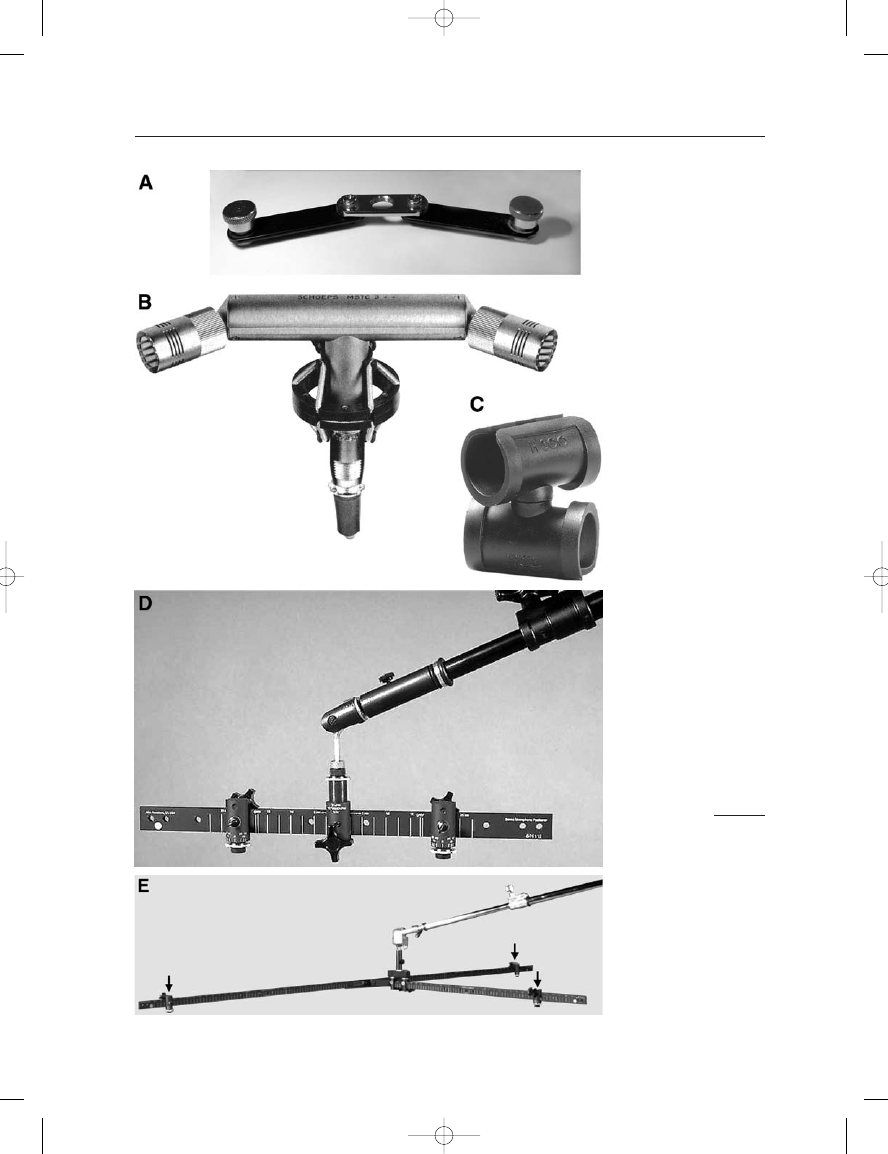
THE MICROPHONE BOOK
156
FIGURE 10–4
Stereo mounts; articulated
type (A); dedicated ORTF
assembly (B); closely
spaced, rotatable assembly
(C); long adjustable stereo
bar (D); and Decca tree (E).
(Photo B courtesy of
Schoeps GmbH; Photo C
courtesy of AKG Acoustics;
Photos D and E courtesy of
Audio Engineering
Associates.)
Earg_10.qxd 14/9/04 2:48 PM Page 156
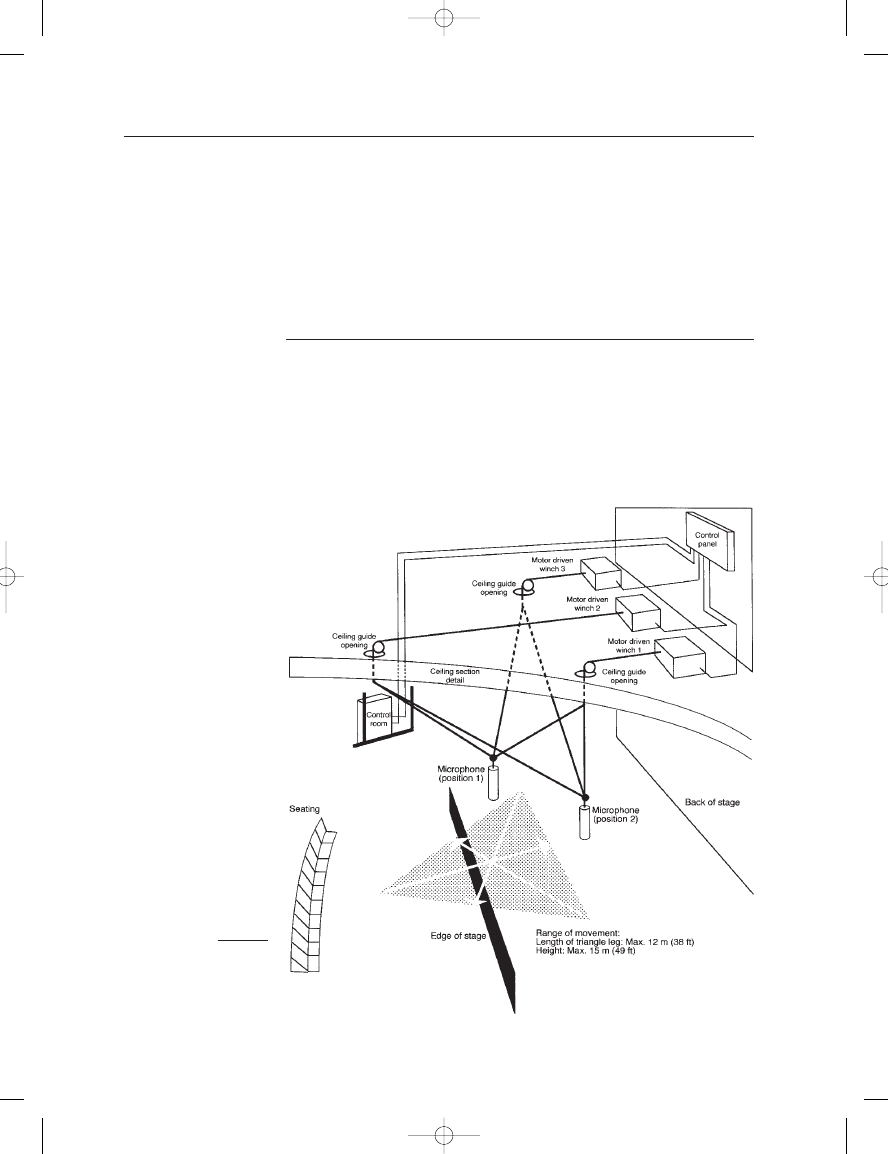
10: Microphone Accessories
157
B provides ORTF mounting for Schoeps cardioid capsules, and the
assembly shown at C provides XY or MS pickup using small format
capacitor microphones. The horizontal bar shown at D may be used for
a wide range of spacing between the stereo microphone pair. A so-called
Decca tree is shown at E and is used in front of large orchestral groups
in the manner of the British Decca record company. Small arrows indi-
cate the positions of the three microphones.
PERMANENT MICROPHONE INSTALLATIONS
Music schools and festival sites have a need for quasi-permanent micro-
phone mounting so that ensemble and recording changes on-stage can
be made quickly. While there will always be a requirement for floor
stands as needed, overhead requirements can normally be met by a sys-
tem of breast lines, pulleys, and cables attached to relatively permanent
microphone receptacles. Most of these systems have been improvised
and fine-tuned over time. Figure 10–5 shows details of a three-way
FIGURE 10–5
Details of a three-point
winch system for
positioning a microphone.
(Data after EMT.)
Earg_10.qxd 14/9/04 2:48 PM Page 157